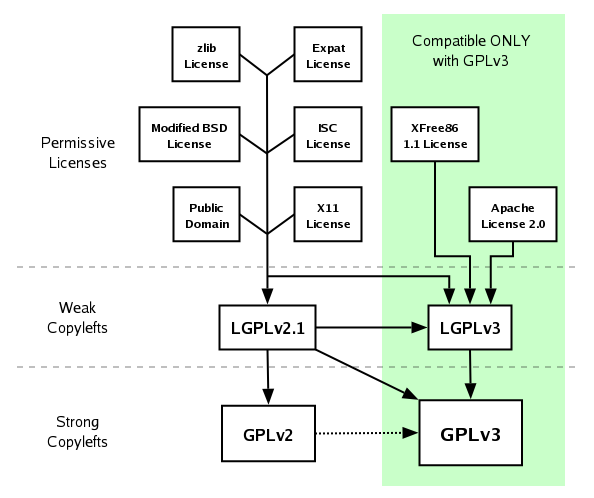...
GPL licences compatibility
Arrows are transitive and go from licences of the components toward the one of your project
(From https://www.gnu.org/licenses/quick-guide-gplv3.html)
...
Above, dotted line – “GPL 2 only” is not compatible with GPL 3”, but ”GPL 2 or later” is
...
.
...
A more detailed view with precisely stated licences:
...
(From David A. Wheeler 2007, https://web.archive.org/web/20210101030518/https://dwheeler.com/essays/floss-license-slide.html, SVG variant: https://en.wikipedia.org/wiki/License_compatibility#/media/File:Floss-license-slide-image.svg)
On AGPL compatibility:
- (L)GPL 3.0(+) components can be used in software under AGPL, thanks to an explicit rule in GPL
- Code under AGPL cannot be used in (L)GPL projects unless dual-licensed
Dual and multi-licensing
- Dual and multi-licences help in avoiding licence compatibility issues, which makes the use of components more flexible
- Dual and multi-licences help in avoiding licence compatibility issues, which makes the use of components more flexible
- You can choose a licence compatible with the one used for your software. But you cannot dual-licence your software to match some components with one and others with another licence. Licences of all used components must be compatible with all of your licences!
- “Or later”(often as “+”) licenses variants just imply the applicability of later, possibly still non-existing, versions of these licences. This is sometimes implied unless you explicitly decline it.
- Some licences include automatic relicensing (MPL 2.0, EUPL 1.2, CeCILL) – EUPL comes with the full and exhaustive list…
...
